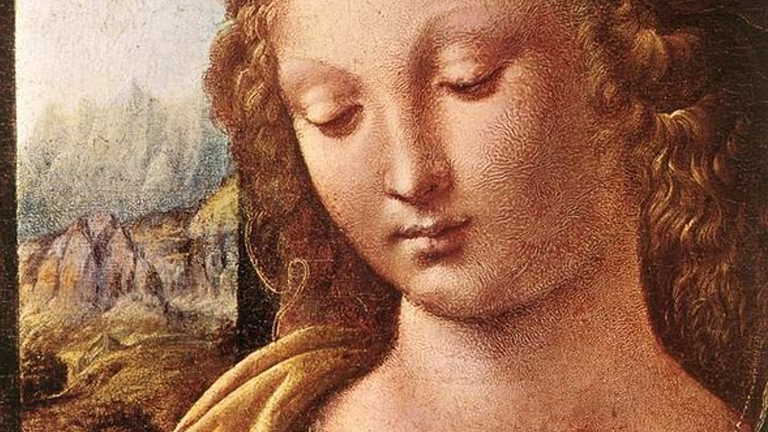

Activity: Open Window
Using Leonardo's Perspectograph
Construct and use a replica of Leonardo's drawing machine to create a drawing with natural and correct perspective.

Leonardo's Window
"Perspective is nothing else than seeing a place or objects behind a plate of glass, quite transparent, on the surface of which the objects behind the glass are to be drawn" – Leonardo da Vinci
Just knowing that an object that is further away in a painting should look smaller wasn't enough for Leonardo da Vinci, he wanted to find ways to more realistically and consistently capture depth in his artwork.
Leonardo learned the rules of perspective and practiced using a window as a device for drawing perspective correctly while he was an apprentice in Verrocchio’s studio. In his notebooks he wrote and sketched his ideas, and described his experiments and observations.
Could a machine help capture perspective?
Building off of his observations, Leonardo invented a machine to help him sketch scenes with the correct linear perspective. This machine was called a perspectograph, and it was made of a pane of glass in a frame with a small viewing slot. Leonardo put the pane of glass in front of the scene he wished to paint, then looked through the viewing slot and sketched the outline of the scene onto the pane of glass. The rough outline on the glass was then used as a guide for the final painting on canvass, ensuring the final scene matched the perspective as it was viewed by the artist.
Since Leonardo’s time, many other artists have created their own versions of the perspectograph to bring realism to their artwork.
Classroom Activity
Lesson Plan
Main Idea: Students use a glass window as a canvas. Looking through one eye they can trace the outlines of objects seen through the window to create a drawing with natural and correct perspective.
Learning Objectives: To become more aware of perspective. To learn and apply a Renaissance technique for creating proper perspective in drawing a scene.
Time: 30 minutes
Materials: windows with views, sheets of acetate, masking tape, straight-backed chairs, eye patches or bandanas, white board, straight edges, white paper
Teaching Tip: If you have large windows with views and a large number of portable chairs, all your students may be able to do this activity at one time. More likely you will want to explain the procedure and then have a few students try it at a time. If the windows are cold, the markers you use may act as if they are out of ink. Holding them point down and breathing warm air on the points will revive them.
Procedure:
- Place the chair close to the window but facing backwards.
- Sit with your legs around the chair back.
- Tape the acetate to the window centered at eye level.
- Cover one eye with a patch or bandana.
- Rest your chin on the middle of the chair back and try hard to keep your head absolutely still.
- Carefully trace the outlines of the objects you see through the window. You may want to use a straight edge when tracing straight lines.
- If you stop to rest, be careful not to move the chair and be sure to put your head back in exactly the same place.
- When you have finished your tracing, remove it from the window and tape it to white paper.
Discussion
Where is the horizon line in your picture? Looking back at the original view may help you locate it.
Can you find any lines or pieces of lines coming closer together as they approach the horizon line? These are orthogonal lines. Can you find the vanishing point? If you aren't sure where it is, try using a straight edge to extend any receding straight lines you find until they meet at the horizon line.
Advanced Activity
If you place white paper on top of your tracing while it is still taped to the window, you can trace the tracing in pencil or another medium to make a more permanent drawing. You may want to add people, animals, plants or buildings to create your own version of the scene. If you wish, color it with paint or crayons.
Students can exchange tracings and try finding the exact spot each was drawn from. They can check their predictions by aligning the tracing on the window and looking with one eye to be sure the drawing's lines match those of the objects outside.